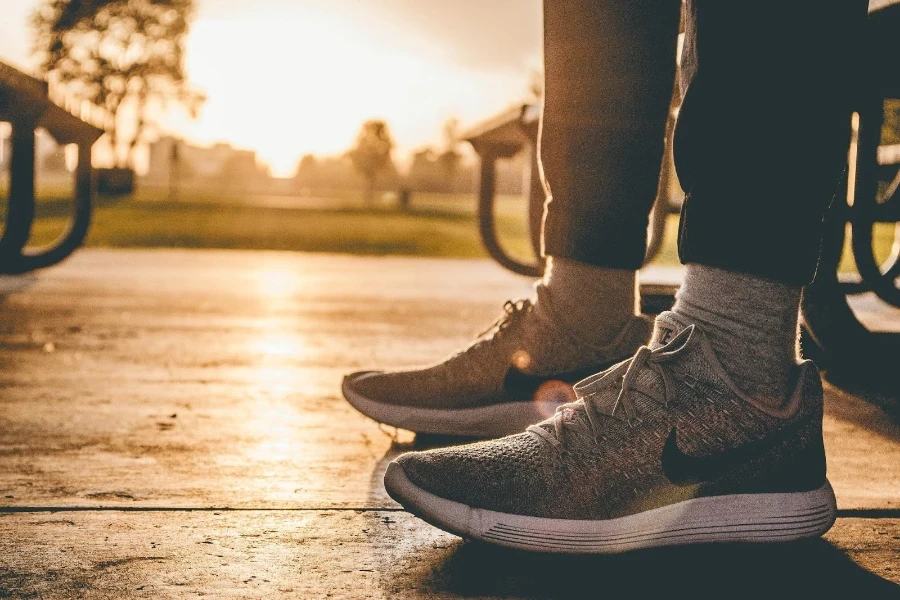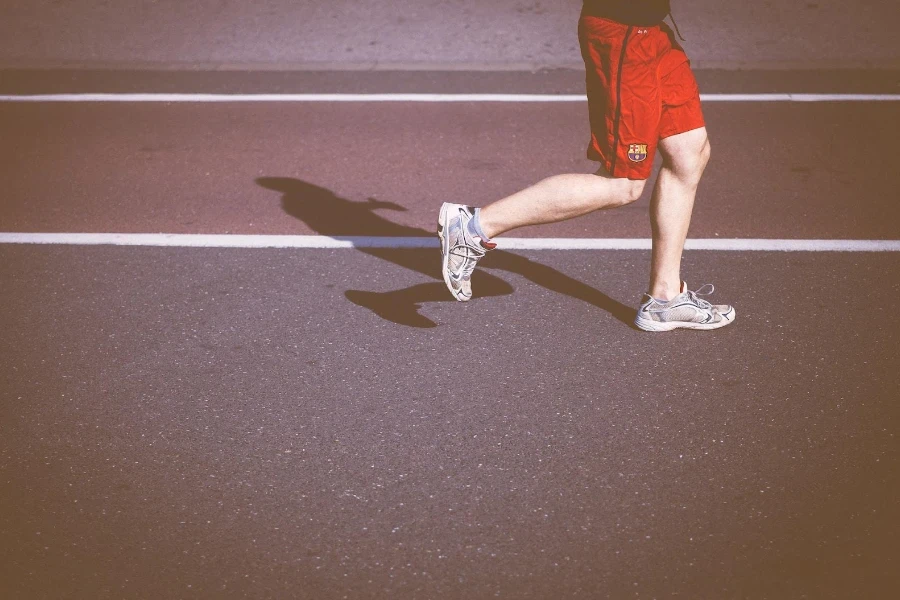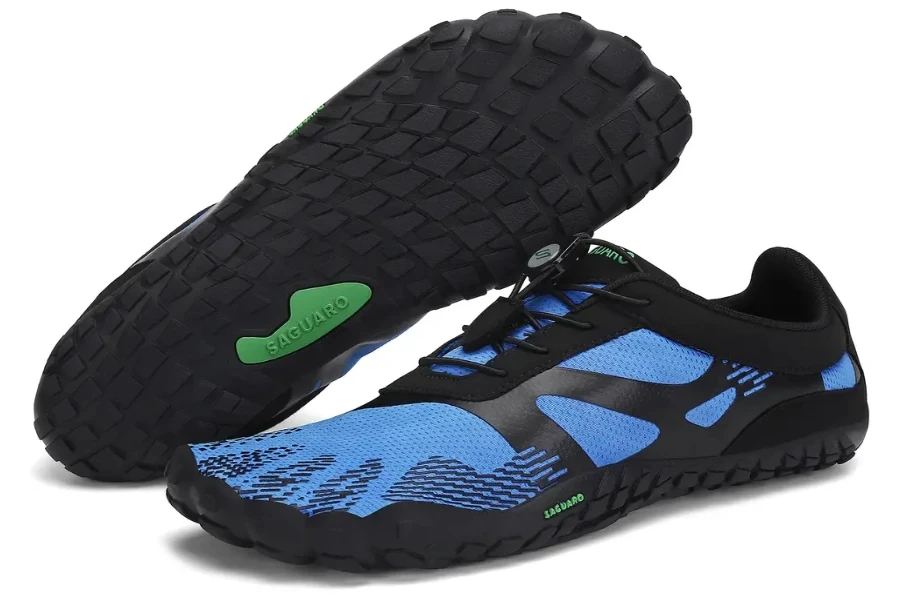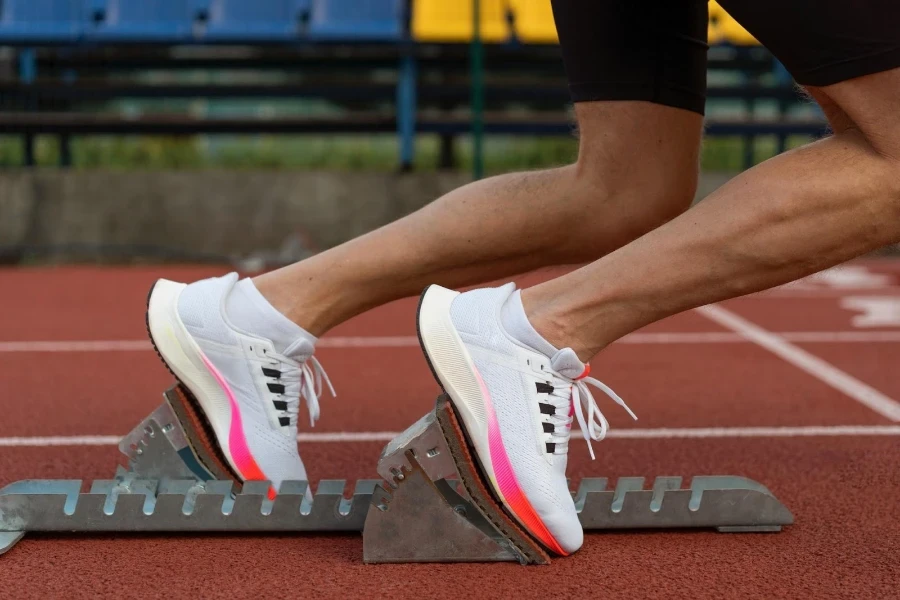For sellers, identifying the best stability running shoes isn’t just about ticking off a list of an individual shoe’s features and benefits. It goes deeper, encompassing an understanding of market dynamics, consumer behavior, and emerging trends. In addition, it means you can cater to your clientele’s diverse and evolving needs, consequently forging lasting relationships by providing products that resonate via quality and purpose. In doing so, you not only guarantee customer satisfaction but also drive consistent sales, creating a win-win situation for both you and your buyers.
In this article, we will look at the different types of stability running shoes and the important factors you must consider before stocking up.
Table of Contents
Market share and size of stability running shoes
Types of stability running shoes
Important factors to consider when buying stability running shoes
Conclusion
Market share and size of stability running shoes
The stability running shoe market is an integral and significant segment of the larger global running shoes market. This segment is a rich niche that sellers can maximize to take their businesses to the next level. As of 2022, the running shoes market size was worth US $50.4 billion overall, and is only expected to grow. By 2030, it is expected to reach US $79.73 billion, growing at a CAGR of 5.9%.
Key factors propelling this growth include the rising awareness of health and fitness; advancements in shoe technology, ensuring better support; and the booming e-commerce sector, which has expanded consumer access to specialized products. Additionally, the increasing popularity of running events and marathons underscores the need for stable shoes that offer optimal control and support. With designers continuously leveraging the latest technology and materials to enhance product functionality, the future of the stability running shoe market looks promising, holding immense potential for retailers.
Types of stability running shoes
As a seller, tapping into consistent consumer interests can be a game-changer. One way to do so is via Google Ads, whose data reveals compelling insights about the types of stability running shoes that consumers are looking for. Searches for terms like “best stability running shoes,” “top stability running shoes,” and “good stability running shoes” have consistently maintained impressive numbers, ranging between 720 to 1,000 monthly entries in the United States. These trends show a solid demand for stability running shoes, which, for sellers, represents an invaluable sales opportunity.
Below we’ll summarize the different types of stability running shoes and why sellers may want to stock them.
Motion control shoes

Motion control shoes are characterized by their rigidity and pronounced medial posts or dual-density midsoles. They are designed to provide maximum support, especially for those runners with flat feet or low arches who require correction for severe overpronation.
By stocking these stability running shoes, sellers can cater to a distinct segment of the running community, helping to establish themselves as a go-to destination for runners with specific needs, securing repeat business and building customer trust.
Structured stability shoes

Structured stability shoes strike a balance between rigidity and flexibility. Their design offers significant arch-side support, typically benefitting those with mild-to-moderate overpronation.
For retailers, these shoes represent a broad segment of the running shoe market, and having them on their shelves can attract a wider audience, from recreational runners to professionals in training. This can guarantee consistent sales and broader market reach.
Cushioned shoes with stability features
Cushioned shoes with stability features blend comfort with function, prioritizing cushioning but also incorporating stability elements. They’re also versatile, serving those who need minor support without compromising on cushioning.
Stocking this type of stability shoe ensures sellers meet the needs of a diverse clientele, especially those looking for multipurpose footwear, from casual joggers to long-distance runners. Given their dual appeal of comfort and stability, these shoes can be a significant sales driver.
Minimalist stability shoes

Minimalist stability shoes offer a near-natural running experience but with added stability features. They cater to the growing segment of runners looking toward a “barefoot” feel but still seeking some support.
This category represents a modern evolution in running shoe technology. Consequently, embracing and offering this variety of shoe showcases your commitment to staying up to date with industry trends, potentially attracting a modern, informed clientele and reinforcing your business’s image as a cutting-edge product provider.
Light stability shoes

Light stability shoes provide a mild level of stability, combining flexibility with subtle support features. They’re perfect for runners who slightly overpronate or neutral runners who need a touch of stability.
These shoes are quite popular, and given their broad appeal, they can be a consistent top-seller, attracting both new runners and veterans. By maintaining a diverse range of light stability shoes, sellers can ensure they cater to the widest possible audience, boosting sales and customer satisfaction.
Important factors to consider when buying stability running shoes

Understanding customer preferences is paramount when stocking stability running shoes. This can help give you an edge over competitors, ensuring you cater to customers’ specific needs and, consequently, drive sales.
Here are some key factors customers consider when purchasing stability running shoes:
Pronation control
A primary determinant of shoe choice is the runner’s pronation type. This is the foot’s natural inward roll as it undergoes a foot strike, which helps to absorb shock and support the body’s weight. There are different types of pronation, including overpronation, neutral, and supination.
Stocking a diverse range that addresses these different foot mechanics ensures every customer will be able to find their perfect fit.
Below, we compare different types of pronation:
| Type of pronation | Characteristics | Potential issues |
| Normal pronation | Natural inward roll (~15%) during foot strike; balanced weight distribution across the foot | Least likely to cause injuries due to its balanced nature |
| Overpronation | Excessive inward roll beyond the 15% mark; weight is mostly on the inner side of the foot | Shin splints, bunions, heel pain, flat feet, and other injuries due to increased stress on feet and ankles |
| Underpronation (supination) | Insufficient inward roll; weight primarily on the outer edge of the foot | Increased likelihood of ankle injuries, stress fractures, and issues related to poor shock absorption |
Cushioning
Runners’ preferences for cushioning varies based on their running style and the distance they cover. Some prefer minimalist designs, while others prefer ultra-cushioned options. Having a diverse choice helps you cater to a wider audience.
Fit and comfort
Beyond shoe size, width options and the comfort of a shoe’s upper material are critical. Ensure your inventory includes various width options and brands known for their comfortable uppers.
Durability and material
The materials used not only determine the shoe’s longevity but also its performance. It’s wise to have shoes made from durable materials strong enough to withstand the wear and tear of regular running.
Price point and brand reputation
Customers often have a budget in mind. By offering shoes across various price points and from reputable brands, you ensure customers can find a product within their budget from a range of trustworthy brands.
Environmental and ethical considerations
The modern consumer is more conscious than ever about the environment and ethical manufacturing practices. Brands that prioritize sustainability or ethical production are increasingly in demand. In 2023, ensuring you stock eco-friendly brands can be a significant selling point for your business.
Conclusion
Wearing the right stability running shoes can be a game-changer for runners. Choosing the right shoe isn’t just about comfort but also injury prevention and optimizing performance as they can counterbalance overpronation, provide needed cushioning, and enhance the overall running experience. These are crucial factors for sellers to understand when stocking up.
In addition, the world’s runners are a vast, varied, and discerning bunch with specific needs. By stocking a diverse range that caters to these different preferences, you can help meet the demands of this customer base and position yourself as a knowledgeable and trusted retailer in the market, attracting and retaining a loyal customer base.
If you’re looking to expand your inventory with the types of stability shoe products like the ones above, simply log on to Alibaba.com.




